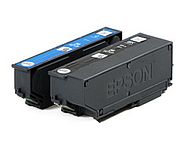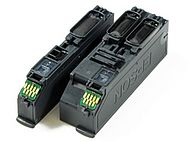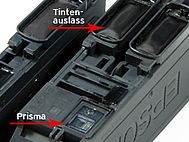Epson 24, T2421-T2426 and Epson 26, T2601-T2614 ink cartridges

With the new cartridges 24 (T2421-T2426) and 26 (T2601-T2614) Epson surprisingly differs the construction type completely from the previous type. With the previous cartridges 16 and 18 we could find at least some relation to the Single-InkJet cartridges that Epson produces for 7 years now. With the new cartridges 24 and 26 Epson rings in a completely new generation of cartridges with an exceptional ink outlet. The new cartridges have the usual chip and the prisma (to see the ink filling level) inside the cartridge which we usually know from Canon cartridges. Overall, the Epson 24 and 26 cartridges are a little bit flatter which makes them similar to Canon cartridges.
Absolutely “sensational” is from our point of view the thick black cartridge which has 2 ink outlets. Therefore we are pretty curious whats inside these cartridges.
Epson 24 and 26 cartridges with chip and prism.
As already described the new cartridges have a chip. The chip gets its information not only from the calculated, theoretical ink fillig level from the printer but also from a photo sensor installed inside the printer. The Prisma (b) at the cartridge reflects the beam of light from the sensor. But only while there is ink behind the prisma inside the cartridge. When the cartridge is empty the sensor recognises that because of the missing light signal from the prisma and then signals that to the chip at the cartridge. The Chip gets this information once and will always signal that the cartridge is empty with immediate effect. This information occurs at the monitor and at the control panel of your printer. With a Chip Resetter we can undo this fact and prepare the cartridge for refilling and further use.
In picture 2 you see a small welded foil (a). It seals 2 small openings (picture 3, arrow a). When using the Epson cartridge this small chamber is only for ink flow. Through opening 1 the ink streams during the printing process in direction with opening 2 to the ink outlet respectively the printer head. We think that these openings originally were used to refill the cartridge. Nevertheless, it would be hard to use this opening for refilling a second time. Because during the refilling air has to escape from the cartridge. But here the air can not escape because of the incoming ink.
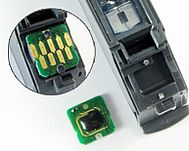
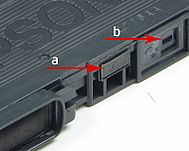
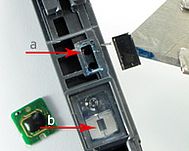
The inside of Epson 24 and 26 colour cartridges
In the inside of an Epson cartridge surprises us an unexpected clear construction. With the old cartridge types refilling was complicated by a variety of ink and air canals. With these types they are missing.
All that we find is a foil (a) which is pressed apart by a spring (b) and a valve (e). Behind the foil is the ink. The foil is welded air tight onto the edge of the cartridge.
When ink is used during printing the volume of the foil chamber does not shrink, but is compensated with air. That is due to the spring and the one-way valve (e). The refilling of this cartridge might be complicated without a tool. Because for refilling we need to remove the air first. If the foil is damaged by opening the cartridge it is broken and can be disposed.
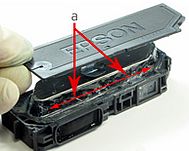
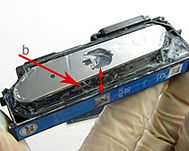
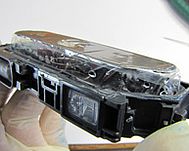
Ink outlet and air valve
For the following pictures we have removed the foil from the ink chamber. Now we can clearly see the prism inside and the ink canal through which the ink flows towards the ink outlet. The ink outlet is open and the ink can get to the ink outlet. There are no valves, filter or other barriers. Even if the ink outlet is constructed in a way that the ink can flow through without hindrance. If the vacuum inside the ink chamber collapses (because of a defect or an open air valve) the ink would flow out of the cartridge automatically.
The construction type of the ink outlet is also new. An oval-shaped ink outlet with air opening nearby (d). The opening of the air canal ends inside the cartridge body. Presumably, it works as pressure compensation for the air space between the outlet of the cartridge and the ink absorption at the printer head.
We are working at a secure refilling method for this cartridge type and hope to have a solution for you soon.
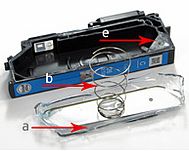
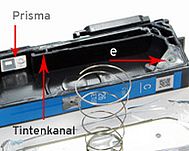
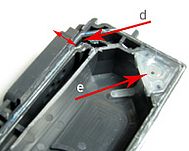
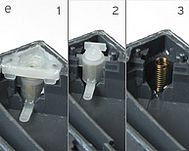
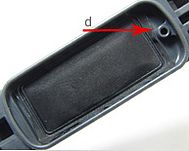
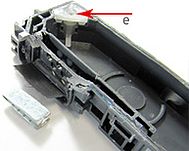
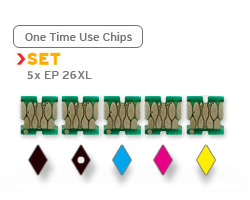 Chip set for Epson 26XL cartridges (non-OEM), 5 chips
Chip set for Epson 26XL cartridges (non-OEM), 5 chips
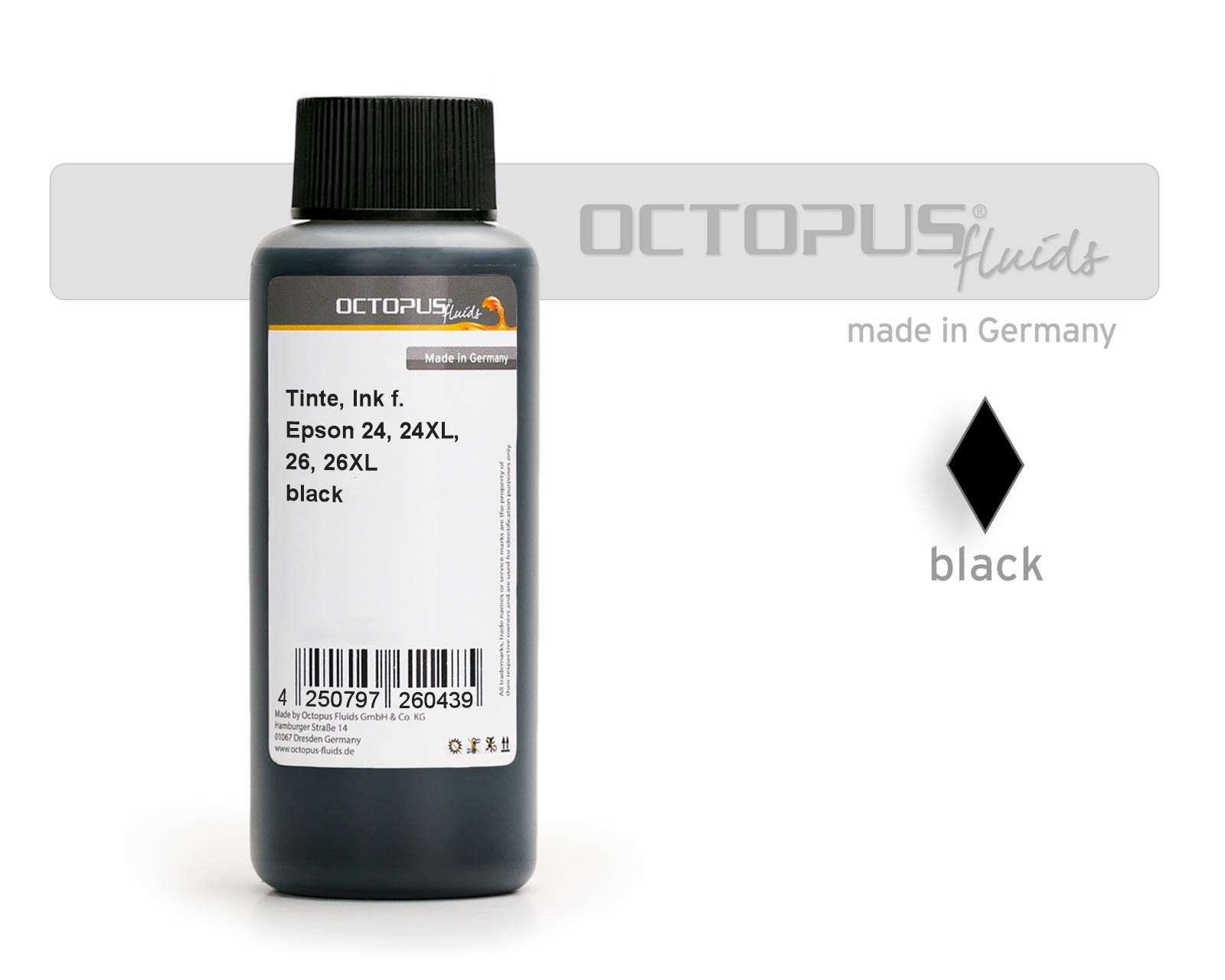 Octopus ink for Epson 24, 24XL, 26, 26XL cartridges black
Octopus ink for Epson 24, 24XL, 26, 26XL cartridges black
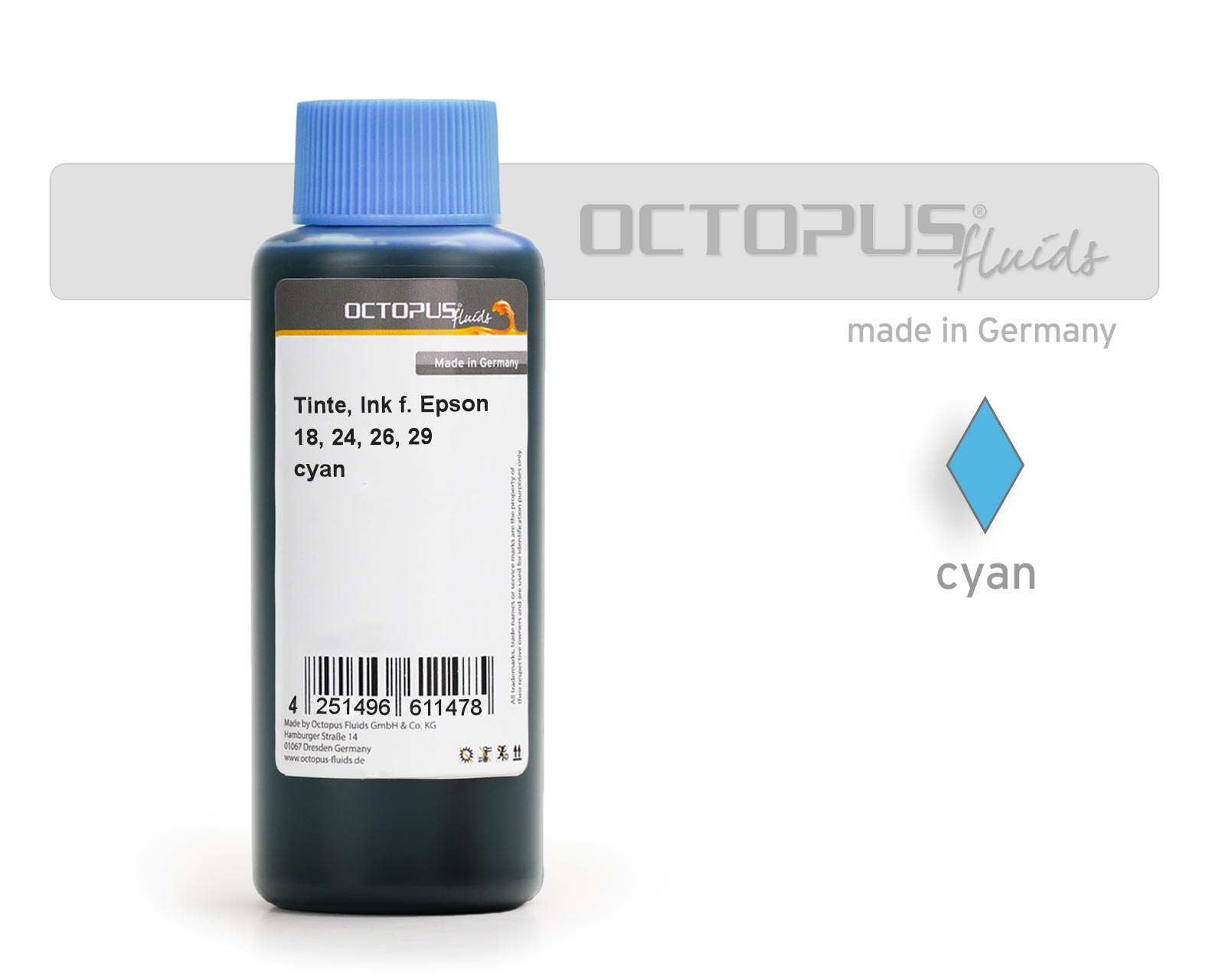 Octopus Ink for Epson 18, 24, 26, 29 cartridges cyan
Octopus Ink for Epson 18, 24, 26, 29 cartridges cyan
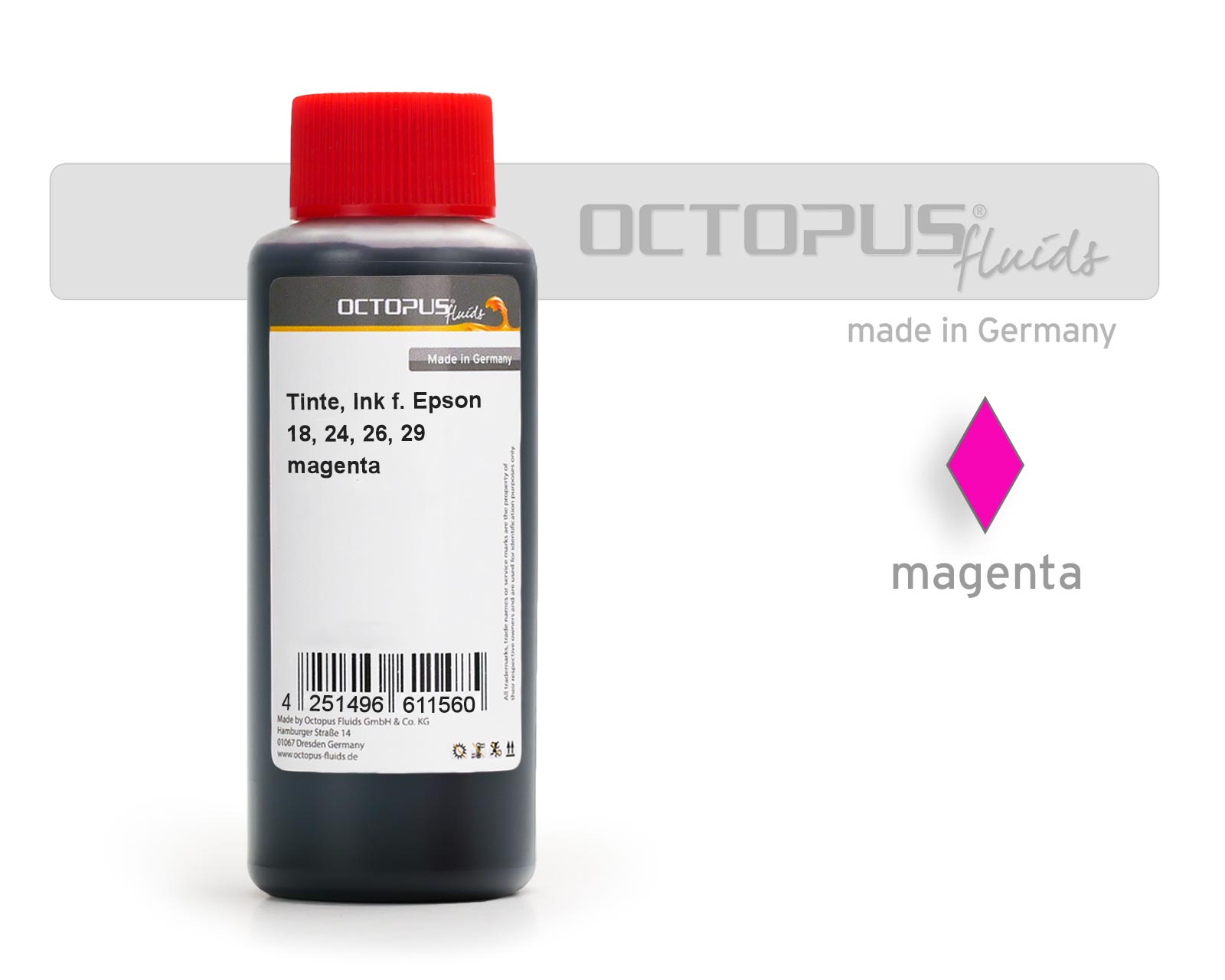 Octopus Ink for Epson 18, 24, 26, 29 cartridges magenta
Octopus Ink for Epson 18, 24, 26, 29 cartridges magenta
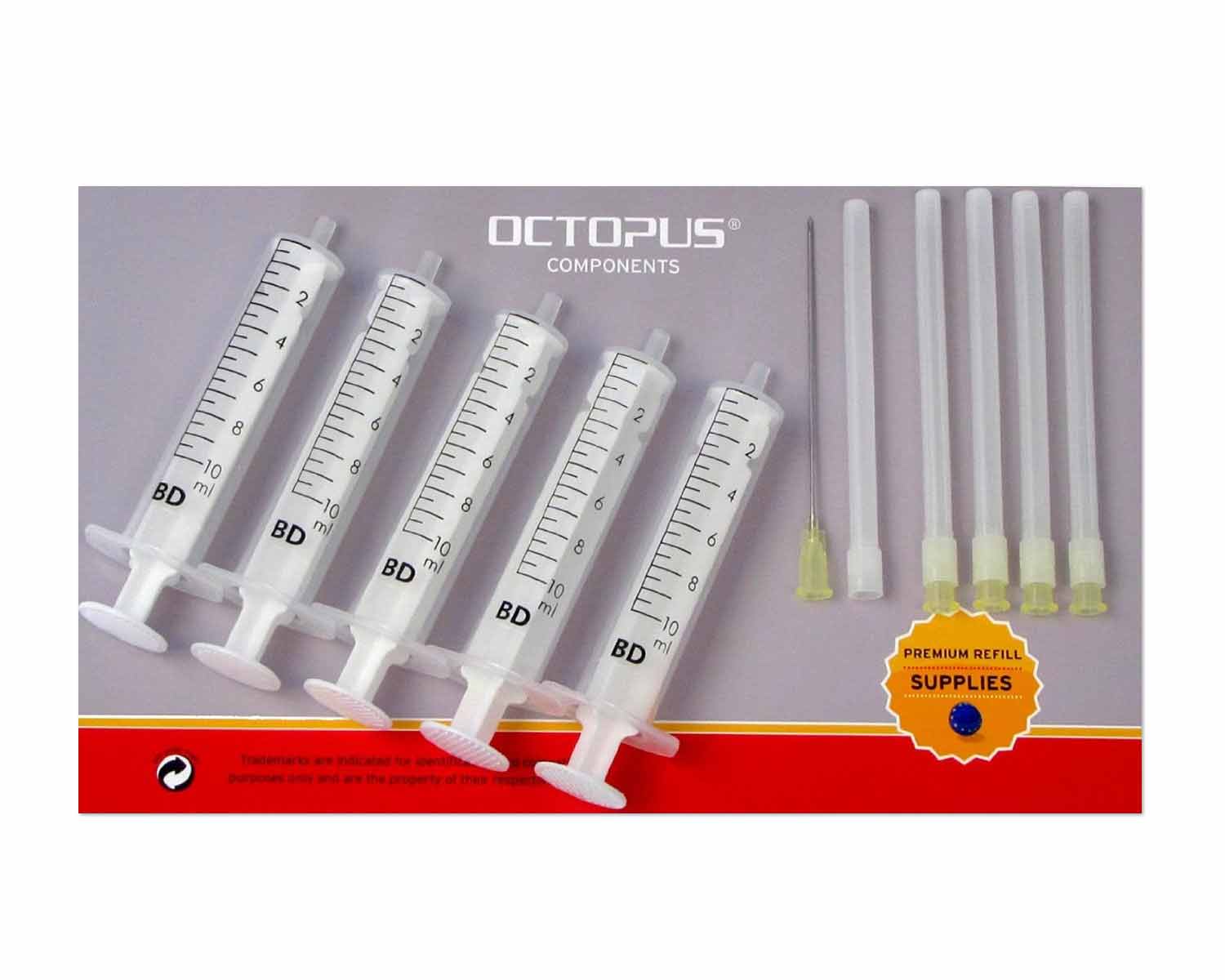 Ink Syringes with Needles (5 pcs.)
Ink Syringes with Needles (5 pcs.)







